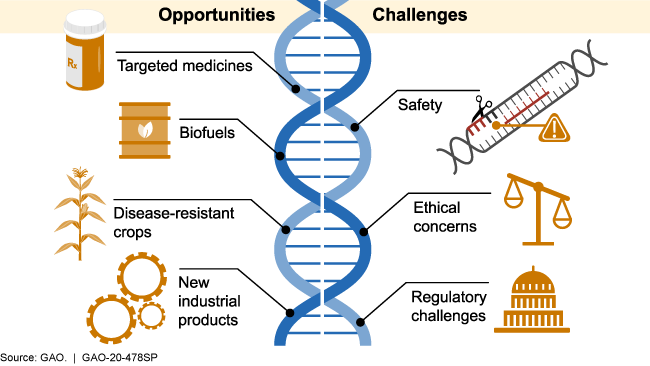
In Context- Recently, experts recommended employing new tools such as Gene editing and Nanotechnology-based solutions in the Agriculture sector.
Why is it needed?
- The need for new breeding technologies is essential if global crop production is to double by 2050 to meet the rising food demand.
- Yield increases of 2.4% per year are required to meet the demand without putting more land under cultivation.
- The annual production of cereals would need to go up by 50% to about three billion tonnes to provide for the 2050 population demand.
- Genome-edited crops had the potential to lower chemical fertilizer and pesticide use, reduce post-harvest losses while at the same time producing climate-resilient, nutrient-dense, and higher-yield crops.
- Nanotechnology is an emerging field of Indian agriculture.
- The use of nanotechnology for enhanced crop productivity can be a locally viable strategy for farmers, especially in exigencies.

What is Gene editing?
- Gene/genome editing refers to technology that permits to change an organism’s DNA.
- These technologies allow genetic material to be added, removed, or altered at particular locations in the genome.
- Its applications include correcting genetic defects, treating and preventing the spread of diseases and improving crops etc.
- CRISPR technology is one of the tools used in gene editing.
- Genomic editing is more accurate, faster, and less expensive compared to genetic modification.

Use Nanotechnology in Agriculture:
- Nanoscience and nanotechnology are the study and application of extremely small things which is about 1 to 100 nanometers.
- It can be used across all the other science fields, such as chemistry, biology, physics, materials science, and engineering.
- Nanotechnology in agriculture includes specific applications like nano fertilizers, nano pesticides, and targeted use of inputs to increase the productivity without decontamination of soil and water etc.
- Steps Taken- In 2007, the government launched a 5-year program called Nano Science and Technology Mission (NSTM) for research and promotion.
Last year, the Ministry of Agriculture released ‘Guidelines for Evaluation of Nano-based Agri-input and food products in India’.
|
CRISPR technology:
|
Previous article
Manual Scavenging law
Next article
World Wetlands Day
